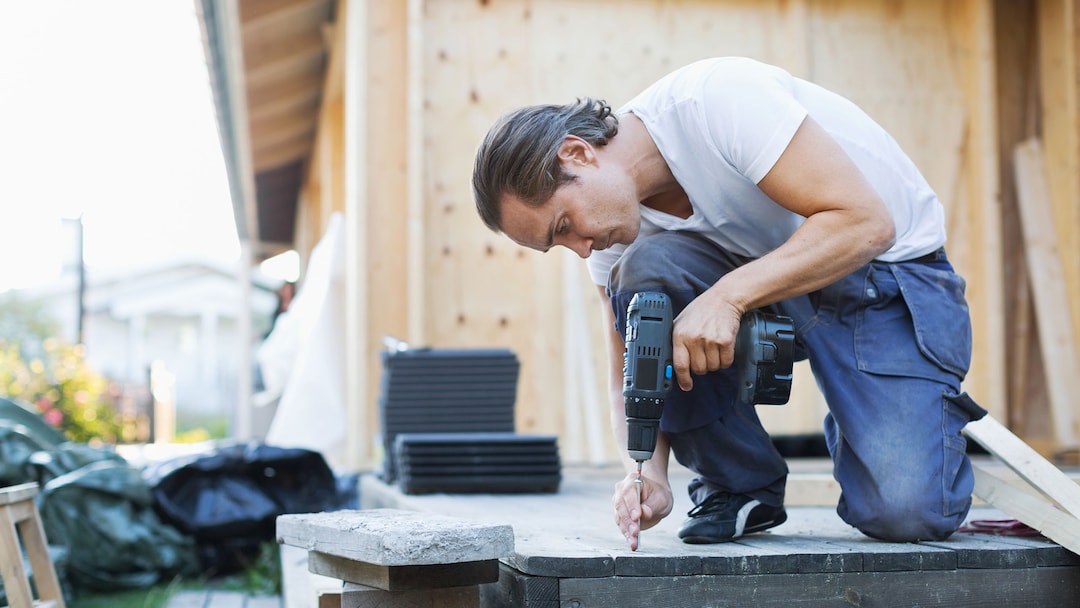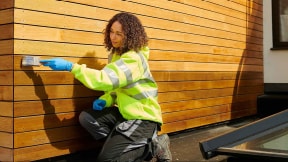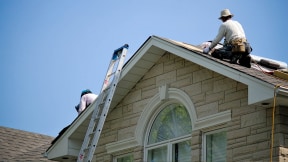How to prepare your house for a hurricane

Hurricanes are known to cause significant damage to communities and, more specifically, to people’s homes. But with the right preparation, safety precautions and insurance coverage, homeowners may be able to avoid some hurricane-related headaches. Whether you live in a hurricane-prone area or you're considering buying in an at-risk area, equipping yourself with the right tools and resources is a helpful place to start.
Climate and safety officials recommend preventative safety measures like keeping an emergency kit stocked. Some additional measures — like securing outdoor furniture — may happen closer to when the storm hits. Here's a list of some things you can do to prepare your home for a hurricane.
Step 1: Review your insurance policies
Reviewing your insurance policy (preferably before hurricane season begins) is a helpful way to prepare your home. It gives you (the homeowner) the opportunity to see, and potentially reconsider, what kind of insurance coverage you have.
Basic homeowners insurance policies often cover repairs, restoration and replacement costs for items damaged due to events such as fires, storms, vandalism or smoke — but most policies have limits to their coverage, leaving you with out-of-pocket expenses you may not be able to comfortably afford. On the other hand, flood insurance provides additional coverage for potential damage and losses caused by flooding and may be required if you’re located in a high-risk flood zone. If you have any questions after reading your policies, you can always contact your insurance company about additional coverage.
Step 2: Prepare an emergency kit
Emergency kits are another recommended way to prepare for a hurricane. In the event you lose power, water or any other resources during the storm, this kit can help sustain the household’s health and safety as you wait for the storm to pass — especially if the storm prevents you from using your car or accessing transportation.
Here are a few things to consider for your kit:
- A list of important phone numbers
- Generator, if possible, to power the fridge or other necessary equipment
- Extra batteries
- Flashlight
- A substantial supply of any necessary medications and medical equipment
- A supply of cash in the event banks or ATMs are closed or unreachable
- A first aid kit
- Soap and sanitizers
- If possible, a battery-operated radio for weather updates
- Nonperishable items including food and water supplies
Step 3: Secure the roof, windows and doors
Securing your roof, windows and doors can help protect against physical damage to your home. Heavy wind is a hurricane’s superpower, potentially causing considerable damage for homeowners. Depending on a hurricane’s intensity, it can move heavy objects into undesired areas and cause substantial damage to surrounding property. According to the Federal Emergency Management Agency (FEMA), a considerable amount of property damage occurs after the storm as well, when rain seeps through damage caused by the storm.
If you’re interested in taking some extra precautions to protect your home from wind or flood damage, you might consider securing your roof, windows and doors by using the following measures:
- Nail down loose roof shingles to protect from strong winds.
- For extra security, put on a fresh coat of roofing cement to prevent roof materials from detaching and causing further damage.
- Make sure your windows are sealed shut. If you’re looking for further insurance, you might install hurricane shutters, storm panels, or build plywood covers over your window.
- Use an adjustable door threshold to seal the bottom and prevent flooding.
- Tighten all door screws and hinges.
- Consider removing screen or storm doors vulnerable to detachment.
Please do use caution when taking any of the above safety measures, and consider using the help of a professional when necessary.
Step 4: Secure or elevate furniture
If you have indoor furniture that could fall over during intense winds, it may be helpful to secure it to the floor or wall. Because, as mentioned, much of the damage caused by hurricanes comes from flooding after the storm, elevating meaningful furniture and using protective covers may help preserve treasured items in the event of flooding.
Step 5: Secure outdoor area
Securing outdoor areas, including your front, back and side yards, are another way to help prepare your house for a hurricane. In addition to protecting any valuable outdoor furniture and appliances you don’t want to get damaged, you’ll want to check that there’s nothing left around that could potentially get picked up by the wind and cause damage to your property. For example:
- Move your car, trucks and any other vehicle into a garage space or other form of cover.
- Clear your yard of extra debris, such as tree branches and stowaway objects, that can be easily swept away.
- If possible, move lawn furniture, bikes, propane tanks and grills inside a garage or covered area. If they can’t be moved, secure outdoor items to the best of your ability.
Other hurricane safety tips
You should also make sure you're protecting yourself. Pay careful attention to your local meteorologist and their communication regarding severe weather patterns. Typically, a meteorologist will signal a hurricane watch or a hurricane warning. Noting the difference can help you get a better idea of what may come. A hurricane watch means hurricane conditions are possible, whereas a hurricane warning means a hurricane is expected.
Your local officials could also issue an evacuation order if conditions are particularly bad. Depending on where you live, it could be your local municipal government, the county or the state in charge of evacuations. Cross-checking your sources, finding what jurisdiction your neighborhood falls under and signing up for emergency alerts is a helpful way to stay in the know in advance of any natural disaster.
If an evacuation order is in place, take local orders seriously. If you need a safe place to stay, consider contacting family and friends in less vulnerable areas. If you don’t have the option to bunker down with family or friends, you may find information about local shelters through your local municipality or state government websites. Finally, keeping a list of important numbers with you and forming a communication plan with friends and loved ones during an evacuation are a few additional measures to consider.
If you’re a pet owner, make sure you have a plan for your furry friend. If they’re able to stay with you, make sure you have enough food and other supplies to cover their needs. Whether it’s bringing them with you, giving them to a family member or friend in a safer area or taking them to a shelter if that option is available, pet preparedness is helpful in case of a hurricane emergency.
It’s also best practice to bring an emergency kit on the road with you. Consider bringing the same items from the emergency kit above, in addition to some of the following:
- Identification cards of all household members
- If applicable, extra fuel for your vehicle
- Bank account numbers, credit card information and any other important accounts or documents you might want access to
In summary
Preparing your house for a hurricane might seem overwhelming, but there’s a lot you can do in advance. For example, going over your insurance policy, securing indoor and outdoor furniture and sealing your home structure to the best of your ability. Preparing emergency kits and following evacuation orders are other precautions you can take if a hurricane is in the weather forecast. Staying in the know can help keep you and your property safe!



